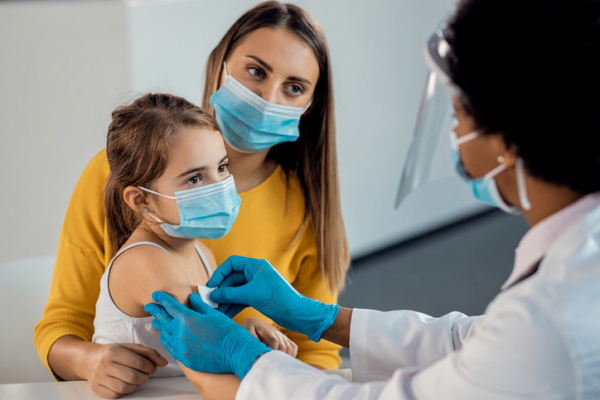
In the US, breast cancer is the most commonly diagnosed cancer in women, and the second leading cause of cancer-related deaths. Each year, an estimated 270,000 women — and a far smaller number of men — are diagnosed with it. When caught in early stages, it’s usually highly treatable.
A promising new form of targeted treatment may expand options available to some women with early-stage breast cancer linked to specific genetic glitches. (Early-stage cancers have not spread to distant organs or tissues in the body.)
The BRCA gene: What does it do?
You may have heard the term BRCA (BReast CAncer) genes, which refers to BRCA1 and BRCA2genes. Normally, BRCA genes help repair damage to our DNA (genetic code) that occurs regularly in cells throughout the human body.
Inherited BRCA mutations are abnormal changes in these genes that are passed on from a parent to a child. When a person has a BRCA mutation, their body cannot repair routine DNA damage to cells as easily. This accumulating damage to cells may help pave a path leading to cancer. Having a BRCA1 or BRCA2 mutation — or both — puts a person at higher risk for cancer of the breast, ovaries, prostate, or pancreas; or for melanoma. A person’s risk for breast cancer can also be affected by other gene mutations and other factors.
Overall, just 3% to 5% of all women with breast cancer have mutations in BRCAgenes. However, BRCA mutations occur more often in certain groups of people, such as those with triple negative breast cancer (TNBC), Ashkenazi Jewish ancestry, a strong family history of breast and/or ovarian cancer, and younger women with breast cancer.
Inherited BRCA mutations and breast cancer types
Certain types of breast cancer are commonly found in women with BRCA gene mutations.
- Estrogen receptor-positive, HER2-negative cancer: Women with a BRCA2 mutation usually develop ER+/HER2- breast cancer — that is, cancer cells that are fueled by the hormone estrogen but not by a protein known as HER2 (human epidermal growth factor 2).
- Triple negative breast cancer: Women with a BRCA1 mutation tend to develop triple negative breast cancer (ER-/PR-/HER2-) — that is, cancer cells that aren’t fueled by the hormones estrogen and progesterone, or by HER2.
Knowing what encourages different types of breast cancer to grow helps scientists develop new treatments, and helps doctors choose available treatments to slow or stop tumor growth. Often this involves a combination of treatments.
A new medicine aimed at early-stage BRCA-related breast cancers
The OlympiA trial enrolled women with early-stage breast cancer and inherited BRCA1/BRCA2 mutations. All were at high risk for breast cancer recurrence despite standard treatments.
Study participants had received standard therapies for breast cancer:
- surgery (a mastectomy or lumpectomy)
- chemotherapy (given either before or after surgery)
- possibly radiation
- possibly hormone-blocking treatment known as endocrine therapy.
They were randomly assigned to take pills twice a day containing olaparib or a placebo (sugar pills) for one year.
Olaparib belongs to a class of medicines called PARP inhibitors. PARP (poly adenosine diphosphate-ribose polymerase) is an enzyme that normally helps repair DNA damage. Blocking this enzyme in BRCA-mutated cancer cells causes the cells to die from increased DNA damage.
Results from this study were published in the New England Journal of Medicine. Women who received olaparib were less likely to have breast cancer recur or metastasize (spread to distant organs or tissues) than women taking placebo. Follow-up at an average of two and a half years showed that slightly more than 85% of women who had received olaparib were alive and did not have a cancer recurrence, or a new second cancer, compared with 77% of women treated with placebo.
Further, the researchers estimated that at three years:
- The likelihood that cancer would not spread to distant organs or tissues was nearly 88% with olaparib, compared to 80% with placebo.
- The likelihood of survival was 92% for the olaparib-treated group and 88% for the placebo group.
The side effects of olaparib include low white cell count, low red cell count, and tiredness. The chances of developing these were low.
The bottom line
Olaparib is already approved by the FDA to treat BRCA-related cancers of the ovaries, pancreas, or prostate, and metastatic breast cancer. FDA approval for early-stage breast cancer that is BRCA-related is expected soon based on this study. These findings suggest taking olaparib for a year after completing standard treatment could be a good option for women who have early-stage breast cancer and an inherited BRCA gene mutation who are at high risk for cancer recurrence and, possibly, its spread.
Follow me on Twitter @NeelamDesai_MD


